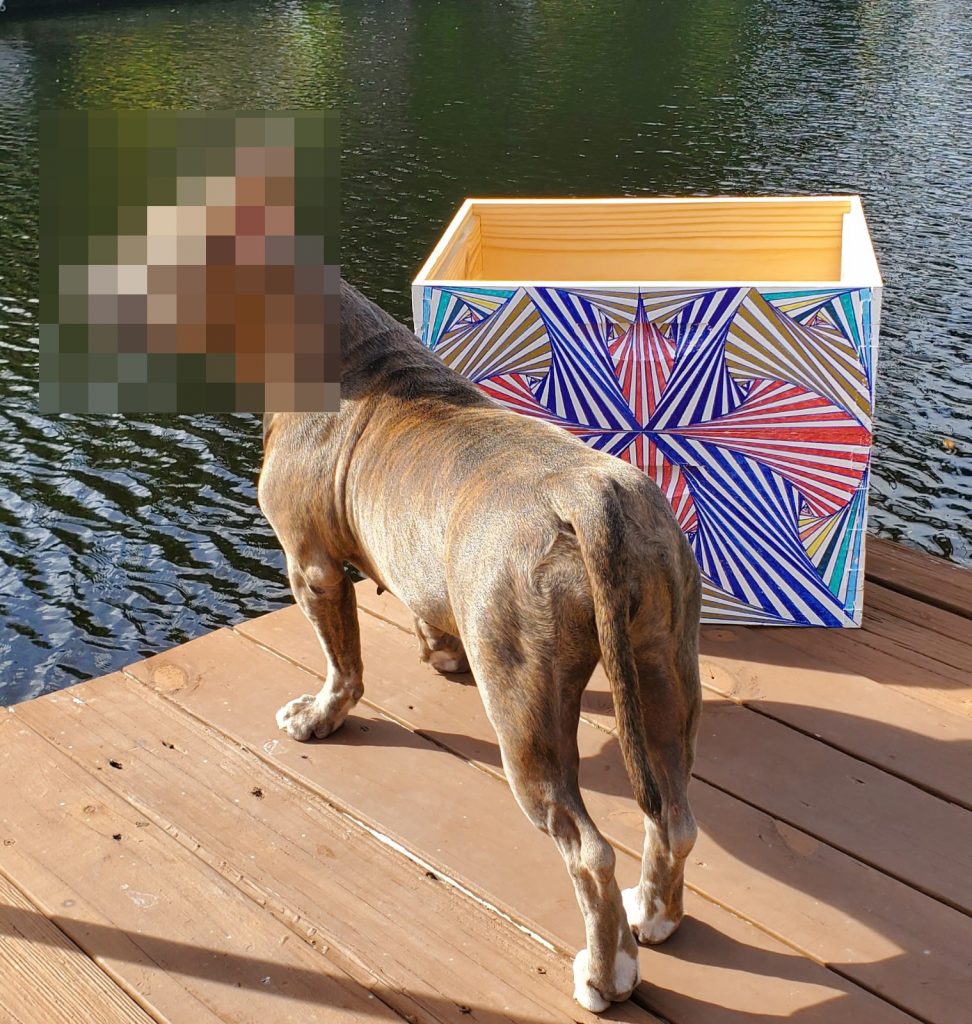ABOUT Pretty beehives
helping bees find their way home AGAIN
“Pretty Bee Hives” are unique, custom painted and decorated genuine pine wood bee hives that I purchase from a reputable bee supply merchant. They are already assembled when I get them, but they have not been painted. I paint them with TWO coats of non-toxic low/no VOC exterior latex paint to protect them from the elements. Bright colors can actually help bee memorize their hive during orientation flights and (in my opinion) can greatly help them find their way home again. THEIR hive is unique!
No two beehives are alike. The only commonality is that they include a deep (brood chamber) and a medium (honey super) and the designs are designed to fit one way and one way only i.e. the honey super pattern is designed to fit perfectly on top of the brood chamber – all the paint patterns and designs line up perfectly, like a jigsaw puzzle, there’s only ONE way to place the super on top of the deep. Why? Well, as we beekeepers know, sometimes when inspecting our hives or harvesting honey from our supers, we lift the supers off and sometimes have to place them on the ground or on 4×4’s while we inspect. It can sometimes be confusing to remember which way you took that super off, and it’s important to put it back exactly the same way – so that it is facing the same way they were when you originally took it off. By my designs, if you look at the super, you can tell immediately which orientation it belongs, so you cannot make a mistake and put the front of the honey super at the back, i.e. the wrong way around.
Not only do Pretty Beehives look stunning in your apiary or garden, but it’s art your bees will live in .


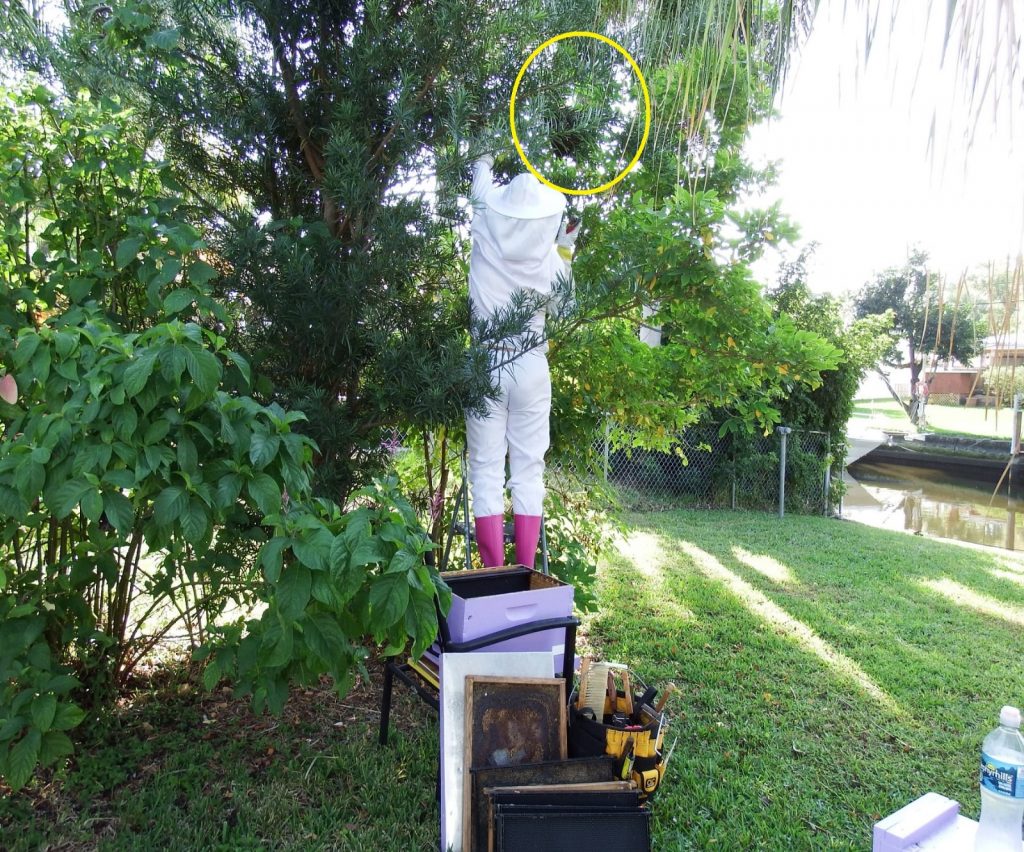
About me
How I became involved with bees.
- I began my journey with bees as the first volunteer for a local bee removal charity. The charity hadn’t actually begun yet, but the founder was interested in promoting urban beekeeping – putting beehives in people’s gardens and back yards, and I was the very first person who volunteered! It was such a successful event that he decided to create a bee removal charity, and I became the first official volunteer. That’s when I caught a serious case of “bee fever” and fell head over heels in love with bees, beginning my incredible journey.
- For four and a half years I assisted with bee removals, documenting them and creating videos, updating the websites, assisting with the bee yards, raising funds and promoting bee awareness, promoting beehive sponsorships, attending farmers markets and local nature fairs, giving bee presentations at schools and botanical gardens, and selling local raw honey. I had a section of my garden turned into an apiary, which evolved over time into The Beemuda Triangle
- I resigned from this charity in August 2022 (sadly they are no longer around) but I continued with my passion for bees by starting a three year + certification to become a Master Beekeeper through the University of Florida/IFAS
- I was lucky enough towards the end of 2022 to meet an AMAZING bee removal expert who is highly skilled in all aspects of honey bee removal including cut outs and trap outs, and has extensive experience with Africanized bee removals. He is the person I always refer for live bee removals (his name is Brian Schafer and he can be reached at 954- 6 1 2 – 3 6 6 2). I have learned so much from him – and I especially LOVE that he cares about all honey bees and is super gentle when doing removals or inspections. He is awesome!
- Remember, we need to save our honey bees because they pollinate one third of all our food crops and they need our help more than ever
- Visit my main bee website if you like, www.saveourhoneybees.com
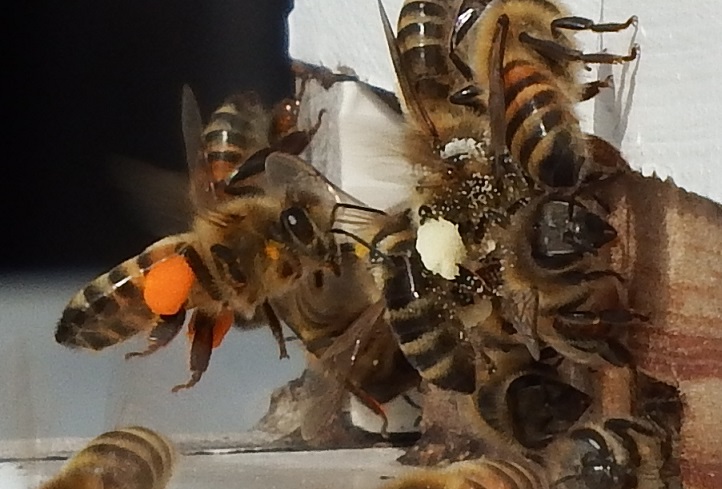
WHY?
WHY DECORATE YOUR BEEHIVES? Just for fun? Or is there another, more important reason
This is why I decorate my beehives.
IMAGINE….
if you lived in a row of white houses that all looked identical, and the only real way you could tell it was YOUR home was the smell wafting from the front door – maybe it’s the lovely smell of freshly baked cookies, or garlic (for those making pasta sauce), or if someone was burning vanilla essence – I mean, you’d find your way approximately to the general area and hopefully that scent would guide you home – you might accidentally wander into someone else’s home and get chased away – but let’s face it, wouldn’t it be much more helpful if your home REALLY stood out from the rest?
From a honey bee’s perspective, imagine if you spent your entire life so far inside the hive doing all the “house bee” chores (nurse bee, janitor bee, etc.) each time getting “promoted” into a new position until one day, you’re told your next job will be as a forager bee – going OUTSIDE your hive to collect food for your family (the “food” really being ingredients – nectar and pollen that you will bring home for the food to be made). Imagine how you’d feel – knowing you’ll be flying about 3 miles from your home to get the ingredients AND then having to find your way back home. With a brain the size of a sesame seed, it must be a HUGE challenge indeed. It’s not like you have a GPS or a set of maps you can carry with you. No, all you have is your senses, your sight, smell and sense of direction. So what do you do?
How do you know what your home even looks like? How on earth will you find your way home again?
What you, as a tiny honey bee, have to do is an “orientation flight”. Along with hundreds and hundreds of your sister (the worker bees), who are also becoming foragers for the first time, you’ll have to leave the hive for the first time (other than previous cleansing flights or bathroom breaks) and figure out what your home looks like. You’ll crawl up the outside wall and launch backwards into the air, flying in small figure 8’s while you look at your hive and committing it to memory. These figure 8’s will get larger and larger, so you’re eventually flying higher and higher, all around your hive, noticing what your home looks like, what landmarks there are, anything that can guide you back home visually. Then you can fly up and away, having memorized what your home looks like. If your home is just one white box among lots of other white boxes – it must be much more difficult to recognize where to go. THAT’S WHY I DECORATE MY HIVES! Even if it’s not a bee fact, I feel that having a unique, vibrant, BRIGHTLY COLORED hive will make it that much easier for those tiny bees to recognize their specific home and to find their way back.
I don’t think it really matters so much what is on the outside of the hive, as long as it is LIGHT COLORS, NON-TOXIC, and unique. Some of my hives have stenciled animals on them, or simple but unique designs – all to help the bees from that hive recognize it and find their way home. Once they get closer, yes, they will also recognize it by the Nasonov pheremone being fanned at the entrance by their sisters, but I truly believe the physical design and coloring plays a role in their long distance vision.
THIS IS NOT WRITTEN ANYWHERE IN ANY SCIENCE BOOK, IT’S NOT A PROVEN THEORY, IT’S PURELY MY OWN OPINION, ME TRYING TO THINK LIKE A BEE – SO IT’S NOT BASED ON FACT AT ALL – Just one beekeeper’s opinion!
Your beehives become your art! Art for your bees, and art for your garden.
my apiary, The Beemuda triangle
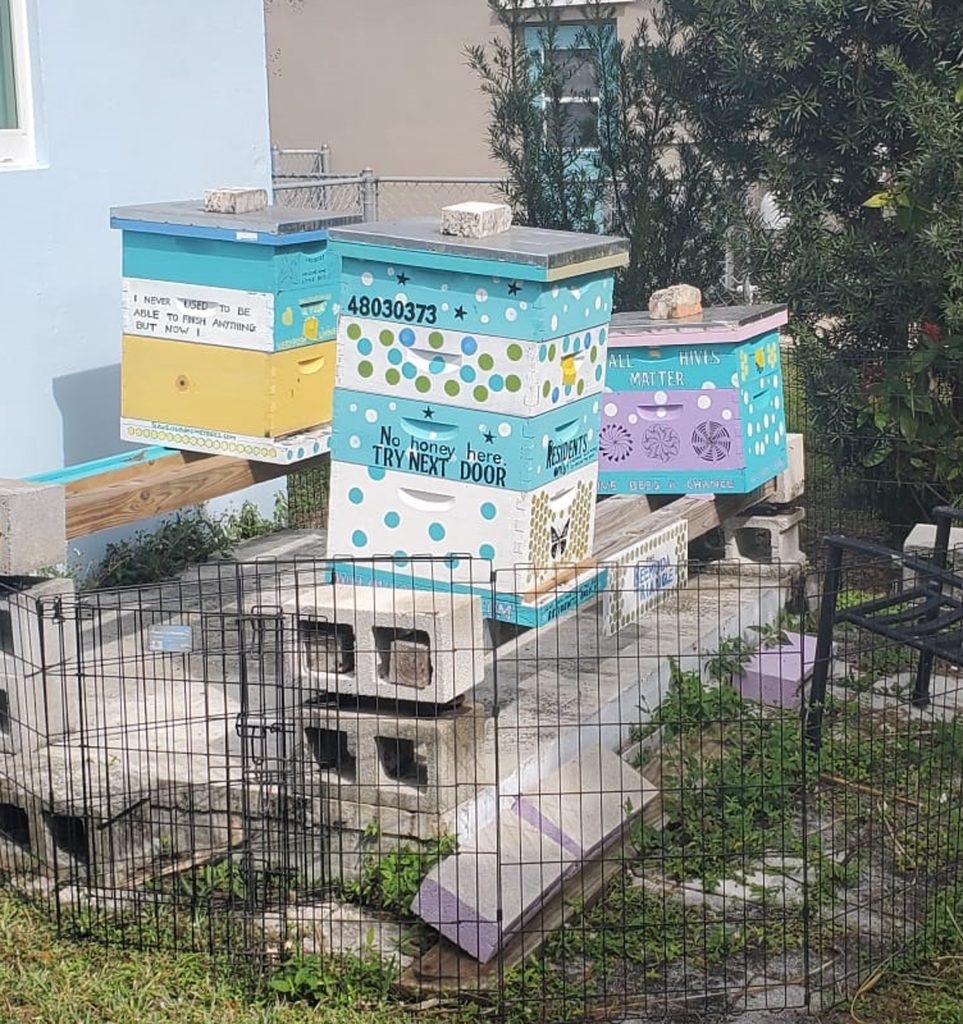
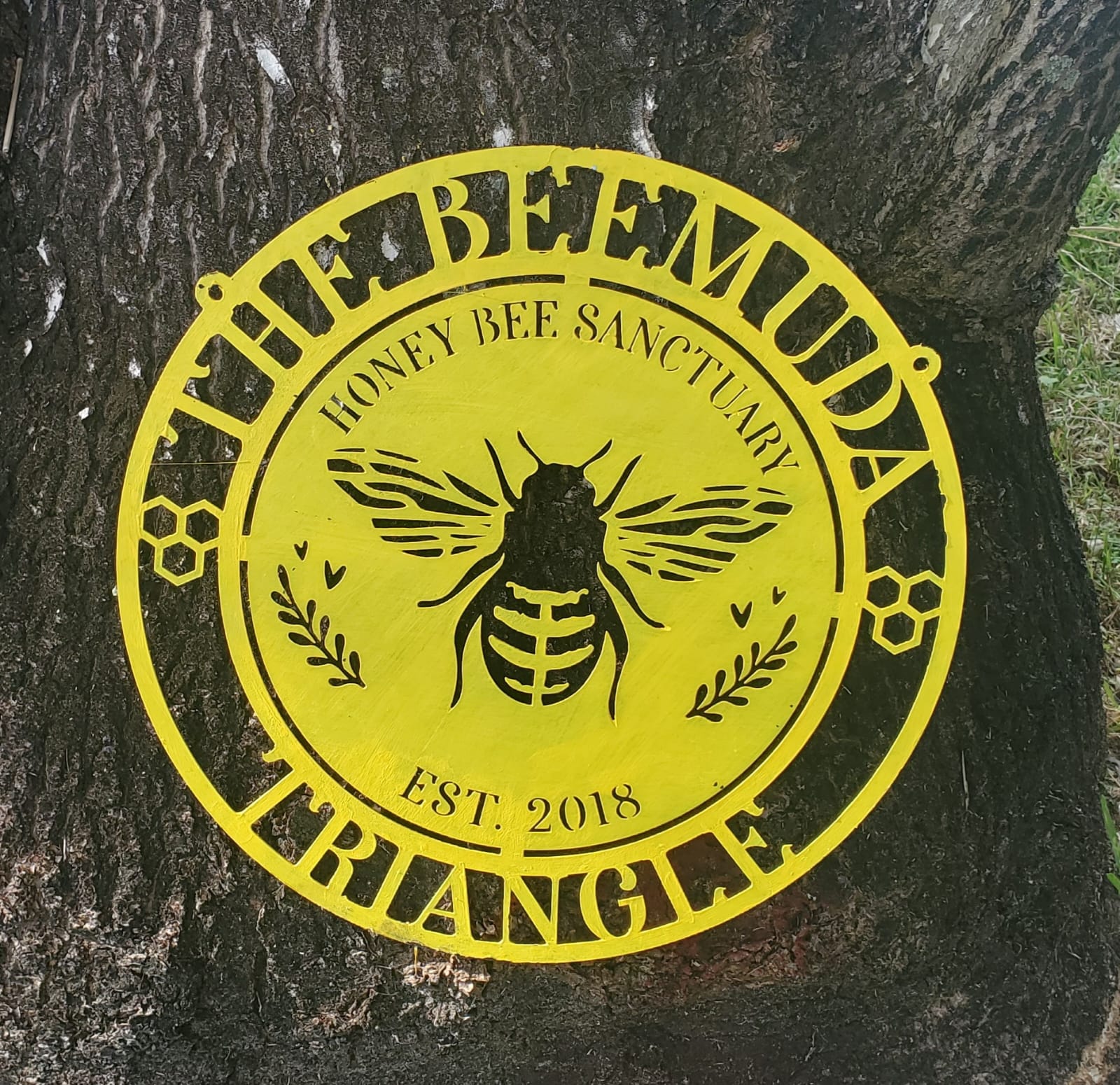
Why “The Beemuda Triangle”?
Because it seemed that so many unexplained bee events happen here! I don’t think they’re really “unexplained”, but it just happens that the beehives are right outside my home office so I see everything that goes on – they can’t get away with a single thing! Whether it’s swarming or usurpation or robbing, or just unusual activity – I’m here to monitor it all! I see the craziest things happen, sometimes awful things (hundreds of bees dying under their hive, for example, from toxic spray in the area), but usually it’s wonderful and mystical and magical and makes me love them even more. Getting involved with bees was one of the best decisions I’ve ever made in my entire life.
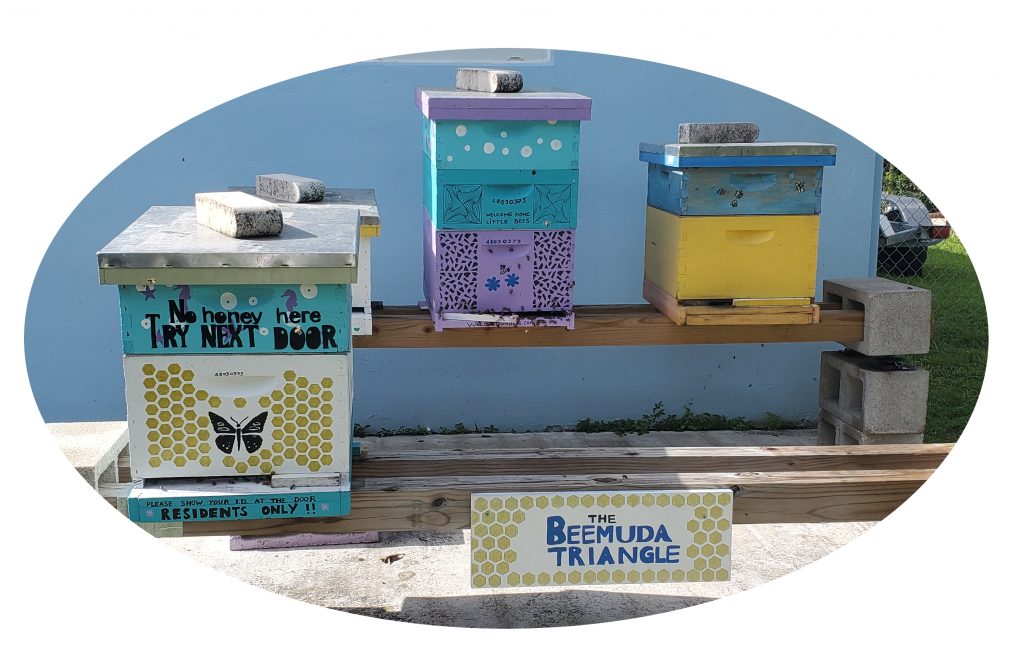

The artist and designer. sami.
FACE BLURRED FOR PROTECTION FROM PAPARAZZI – she needs her privacy.
